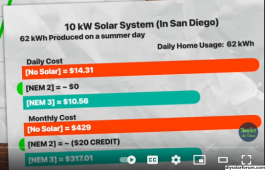That one has been shelved. It was an interesting band aid for the solar cost shift effects but everyone seems to agree it was too distorted. That's how we got the Income Graduated Fixed Charge instead which is not based on solar or system size.
According to "Two Bit di Vinci", it appears to be a variation of the "2 Card Monty" short con. Money is fungible, put it in one pocket, pull it out of the other. Here they are taking it out of the customer's grid-tie returns. The more solar customers produce, the more solar customers lose. You can either increase prices or reduce returns. The "net 3.0" result is the same, the dealer wins.
Last edited:



